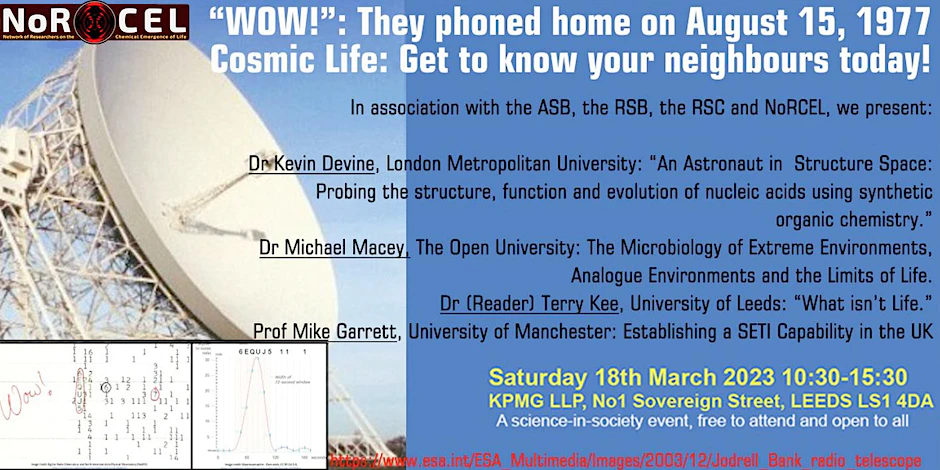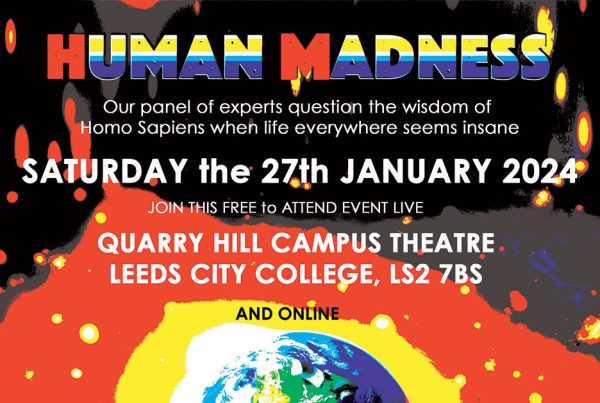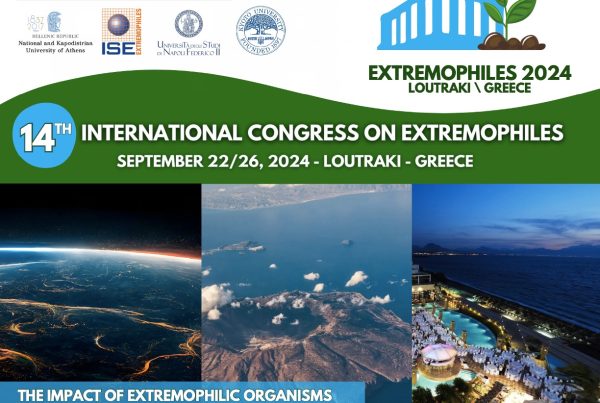
Frontiers of Sciences VII in 2023
Finally sees us back in reality in Leeds and bringing some inspiring insights into the outer limits of space and everything astroscience. All those with curious minds and an interest in finding out more about the developments in scientific research and discovery that are current and relevant are more than welcome to attend. Please register via our Eventbrite link: https://www.eventbrite.co.uk/e/frontiers-of-sciences-vii-tickets-510880817277
Date and time: Sat, 18th of March 2023, 10:30 –15:30
Venue: KPMG: 1 Sovereign Square, Sovereign Street, Leeds LS1 4DA
OUR SPEAKERS and TOPICS
Dr Kevin Devine
Senior lecturer, Researcher in Pharmaceutical Sciences at London Metropolitan University
An Astronaut in Structure Space: Probing the structure, function and evolution of nucleic acids using synthetic organic chemistry.
Modern terran life uses several essential biopolymers like nucleic acids, proteins and polysaccharides. The nucleic acids, DNA and RNA are arguably life’s most important, acting as the stores and translators of genetic information contained in their base sequences, which ultimately manifest themselves in the amino acid sequences of proteins. But just exactly what is it about their structures; an aromatic heterocyclic base appended to a (five-atom ring) sugar-phosphate backbone that enables them to carry out these functions with such high fidelity? In the past three decades, leading chemists have created in their laboratories synthetic analogues of nucleic acids which differ from their natural counterparts in three key areas; (a) Replacement of the phosphate moiety with an uncharged analogue, (b) Replacement of the pentose sugars ribose and deoxyribose with alternative pentose and hexose derivatives, and finally (c) Replacement of the two heterocyclic base pairs adenine/thymine and guanine/cytosine with non-standard analogs that obey the Watson-Crick pairing rules. The talk will examine in detail the physical and chemical properties of these synthetic nucleic acid analogues, in particular on their abilities to serve as conveyors of genetic information. And if life exists elsewhere in the universe, will it also use DNA?
Bio: Dr Kevin Devine: After obtaining his B.Sc in chemistry from Liverpool University in 1982 and two-year spell as a graduate research assistant at G.D. Searle, he embarked upon a PhD in nucleic acid chemistry at King’s College London. For three years he was a post-doctoral research assistant in the laboratory of the late Prof Chris McGuigan, where he co-invented a new class of protected nucleotide prodrugs known as protides, two of which are now on the market (sofosbuvir and tenefovir alafenamide). Two more protide drugs are in phase 3 clinical trials for the treatment of a variety of chemotherapy-resistant cancers, and another protide, femdesivir, is in late stage phase IV trials for the treatment of Ebola.
Dr Devine was a post-doctoral research fellow at Sandoz Pharma, in Basel, Switzerland on the design and synthesis of nucleotide derivatives as potential anti-sense agents, followed by a working on synthesis of gene-targeting cyclic peptide derivates as potential new anti-cancer therapeutics at St Luke’s Institute of Cancer Research, University College Dublin. After spending three months at the ETH, Zurich as a post-doc in the laboratory of Prof Steven Benner, moving with the Benner group to the University of Florida, where he worked as post-doc on synthesis of novel nucleosides
In 2008 he secured a lectureship in Chemistry and Pharmaceutical Sciences at London Metropolitan University, where he still remains today. His research interests include the design and synthesis of novel glutamate analogs as potential new anti-malarials; the development of a refined analytical protocol for the extraction and identification of organic compounds present in Mars soil analogs that contain perchlorate salts, and the extraction and identification of volatile organic compounds from soil samples taken from various locations (and depths) in the Atacama desert, Chile.
Dr Michael Macey
Astrobiology at OU, The Open University, Milton Keynes, UK
The microbiology of extreme environments, analogue environments, and the limits of life
Extreme environments (e.g. hot springs, hydrothermal vents, and salt flats) are typically colonised by extremophilic microbes, organisms that can survive an array of extreme selection gradients. There is a broad diversity of metabolic processes and survival strategies that allow microbes to survive and thrive whilst withstanding gradients of extreme environmental conditions. The characterisation of the geochemistry and microbial communities of extreme environments through a combination of modelling, cultivation-dependant methods and sequence-based techniques allows the investigation of key questions in the fields of astrobiology, microbiology, and ecology. One key area of this research is the identification of terrestrial environments that possess a similar chemistry to proposed extra-terrestrial environments, with these sites acting as analogue environments that provide physicochemical proxies. These analogues can then be used to develop hypotheses with regards to the potential habitability of these environments and the range of putatively feasible metabolisms capable of being supported by these extra-terrestrial chemistries. In this talk, we will discuss the array of selection pressures in extreme environments, the diversity of metabolisms and survival strategies that allow microbes to overcome them, and the implications of this research pertaining to the origin of life.
Bio: Dr Michael C. Macey: Dr Macey is an environmental microbiologist working as a research associate in AstrobiologyOU, investigating the diversity of microbes that can survive in some of the most extreme environments on Earth and testing if these microbes can grow under simulated extra-terrestrial conditions. He is part of a group of researchers who have developed a state-of-the-art system for simulating ground waters that may have existed on Mars and may continue to exist beneath the surface. Michael joined the Open University in 2018 having completed his PhD at the University of East Anglia investigating plant associated microbes and their impact on atmospheric gases. Michael is also a champion for the Microbiology Society and the book that got him interested in pursuing Microbiology as a field is Microcosm by Carl Zimmer.
Prof Michael (Mike) Garrett
inaugural Sir Bernard Lovell Chair of Astrophysics at the University of Manchester
Establishing a SETI capability in the UK
Until recently, SETI searches at radio wavelengths have been conducted almost exclusively by single dishes (e.g. Arecibo) or beam-formed compact arrays (e.g. ATA). With new telescopes typically being composed of a large number of relatively small dishes, distributed across tens or hundreds of km, it makes sense to consider how such instruments might best be employed by SETI in general. The UK e-MERLIN National facility represents a perfect platform on which to develop the techniques of SETI using distributed Interferometric arrays. This technique offers some advantages over traditional approaches (see arXiv:1810.07235) and is likely to be applicable to next generation instruments, such as the large global Square Kilometre Array (SKA) project. I will present the first results using e-MERLIN (and the European VLBI Network). I will also talk about developments being made to educate undergraduate students at the University of Manchester on SETI (and related topics) via UCIL (University College for Interdisciplinary Learning).
Bio: Prof Michael Garrett: Prof. Michael (Mike) Garrett is the inaugural Sir Bernard Lovell Chair of Astrophysics at the University of Manchester, and Director of Jodrell Bank Centre for Astrophysics (JBCA). He is a former director of JIVE (Joint Institute for VLBI in Europe) and Director General of ASTRON (Netherlands Institute for Radio Astronomy). Garrett’s research interests are broad, with his own work focusing on high resolution radio observations of the distant Universe. He has published more than 150 refereed papers on this and related topics. He is also interested in the Search for Extraterrestrial Intelligence (SETI), and is the vice-chair of the IAA SETI Permanent Committee (SETI PC). He serves on numerous related scientific advisory boards, including those of the SETI Institute and Breakthrough Listen.
Dr Terence P. Kee
School of Chemistry, University of Leeds, Leeds LS2 9JT
What Isn’t Life?
For centuries, mankind has struggled with the problem of defining life. Just what is it? What makes it different from things that are not living? It seems that the main difficulty is that we do not yet have a good enough model of what living is, in its widest sense to even start to provide definitions. To put this problem into perspective, there are two big scientific ideas that have helped humans to try to understand (at a crude level) how our Universe works; Einstein’s theory of general relativity and the concept of quantum mechanics. The former allows us to see how space and time are connected; connections between the big stuff of the Universe whilst the latter gives us a picture of how everything is built of immeasurably tiny things; things like quarks, neutrino’s and electrons. Both these models of the very big and the very small work quite well in themselves, but neither of them seem to nail what life is.
This talk, based on a forthcoming book of the same title, tries to get to grips with this conundrum. And will lay out a pathway, a scientifically reasoned pathway to an understanding of what life might possibly be.
Here is not the place to talk of detail, but the main take-home message? The startling conclusion I want to place before you is that everything is living; there is no such thing as non-life. The Universe is in effect one single, unified, interconnected livingness of which we and every other collection of stuff in the Universe is a full and connected part. Everything lives; everything changes. This conclusion itself changes the type of questions we may wish to ask about life, the Universe and our place within it. It would be my real pleasure to share this with you.
Bio: Dr Terence Kee: Following BSc (1985) and PhD (1989) degrees in organometallic chemistry at Durham University, Terence Kee spent 18 months as an SERC(NATO) Postdoctoral fellow at the Massachusetts Institute of Technology working with Nobel Laureate Professor Richard Schrock. He was appointed lecturer at the University of Leeds in 1990 and subsequently
senior lecturer (1997) and reader (2010). TPK has been Visiting Professor at the Universite´ de Cergy-Pontoise, France (1999) and CNRS Centre Biophysique Mole´culaire, France (2016) and holds affiliate faculty membership in the Department of Astronomy, University of Florida, Gainesville, USA. He was an STFC-UKSA Aurora Fellow in Astrobiology (2009-12) and since 2010 has been president of the Astrobiology Society of Britain. TPK has authored or co-authored >100 published journal articles, books chapters and reviews. In 2004, TPK discipline hopped from inorganic chemistry to chemical astrobiology, publishing some 17 papers. He received the Research Award from the Astrobiology Society of Britain in 2008.



